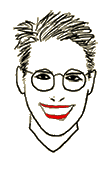
Visit our STORE.
Time to ask, "What Would Gandhi Do?"
Those in power right now tell us that war is the answer. To shrink back from military intervention is “appeasement.” To stop fighting is to “cut and run.” If you don’t want to bomb, you must favor doing nothing. Justice requires an eye for an eye.
But wait. Didn’t Gandhi teach us a strategy of nonviolence – a high-spirited, activist strategy that drove England out of India and that inspired the U.S. civil rights movement?
To remind myself of how nonviolence works I visited with Arun Gandhi, founder and president of the MK Gandhi Institute for Nonviolence and a resident of Brighton NY. Arun was born under apartheid in South Africa, suffered severe color prejudice, and, as a rage-filled teenager, was sent to live in India with his grandfather Mahatma Gandhi. For 18 months, the elder Gandhi took Arun under his wing.
My conversations with Arun showed me how superficial my understanding of nonviolence was. Nonviolence is not about burying your anger while the bullies get the best of you. It’s not about diverting anger into sports. It isn’t passive or withdrawn or isolationist.
Anger is like electricity, Arun’s grandfather said. It can cause devastating destruction or it can light cities. Without anger, he said, “we would not be motivated to rise to any challenge. Anger is an energy that compels us to define what is right and wrong, good and bad, just and unjust.” At his grandfather’s side, Arun learned that the essence of nonviolence is to bring about better relationships between the oppressed and the oppressor through five elements: love, respect, understanding, acceptance and appreciation. And he learned that “an eye for an eye only makes the whole world blind.”
Arun witnessed how his grandfather turned this personal wisdom into political action. Nonviolence is not about turning the other cheek; it’s about turning enemies into friends.
But, as always, leadership is key. It’s easy to send bombers. That isn’t courage. What takes courage, imagination and charisma is making so many friends that the true evil-doers don’t have a leg left to stand on. “Hatred needs fuel,” Arun told me. As more people band together in friendship, the power of evil evaporates. The bad guys must skulk away.
Right now our leaders in Washington don’t have the courage or the talent to engage in dialogue with anyone they find offensive. And of course, neither do the members of radical Islamist movements. Without a framework for dialogue and recognition of our interdependence, Arun ponders: "Where will it end? We are allowing terrorists to set the agenda. How many people will have to die in order to 'win'?"
September 11, 2006, is the five-year anniversary of the monstrous act that has spawned only mayhem. But it is also the centenary of Mohandas Gandhi’s first nonviolence campaign in South Africa. Our choice that day: we can celebrate vengeance or we can join Arun Gandhi in celebrating the power of nonviolence to bring about astonishing political change and social transformation.
8.13.06
Published in the Rochester Democrat and Chronicle, on the Speaking Out page, 9/8/06